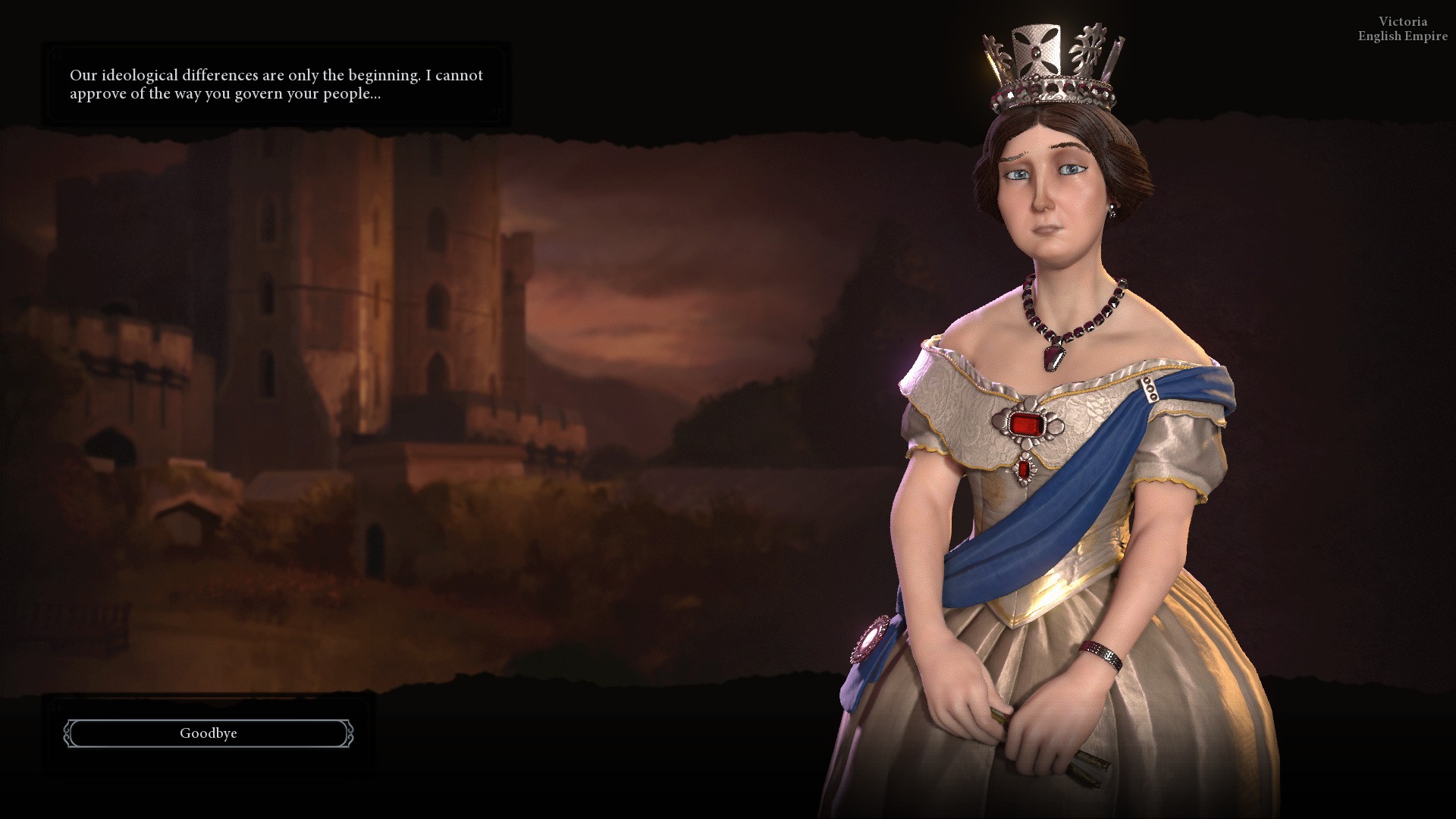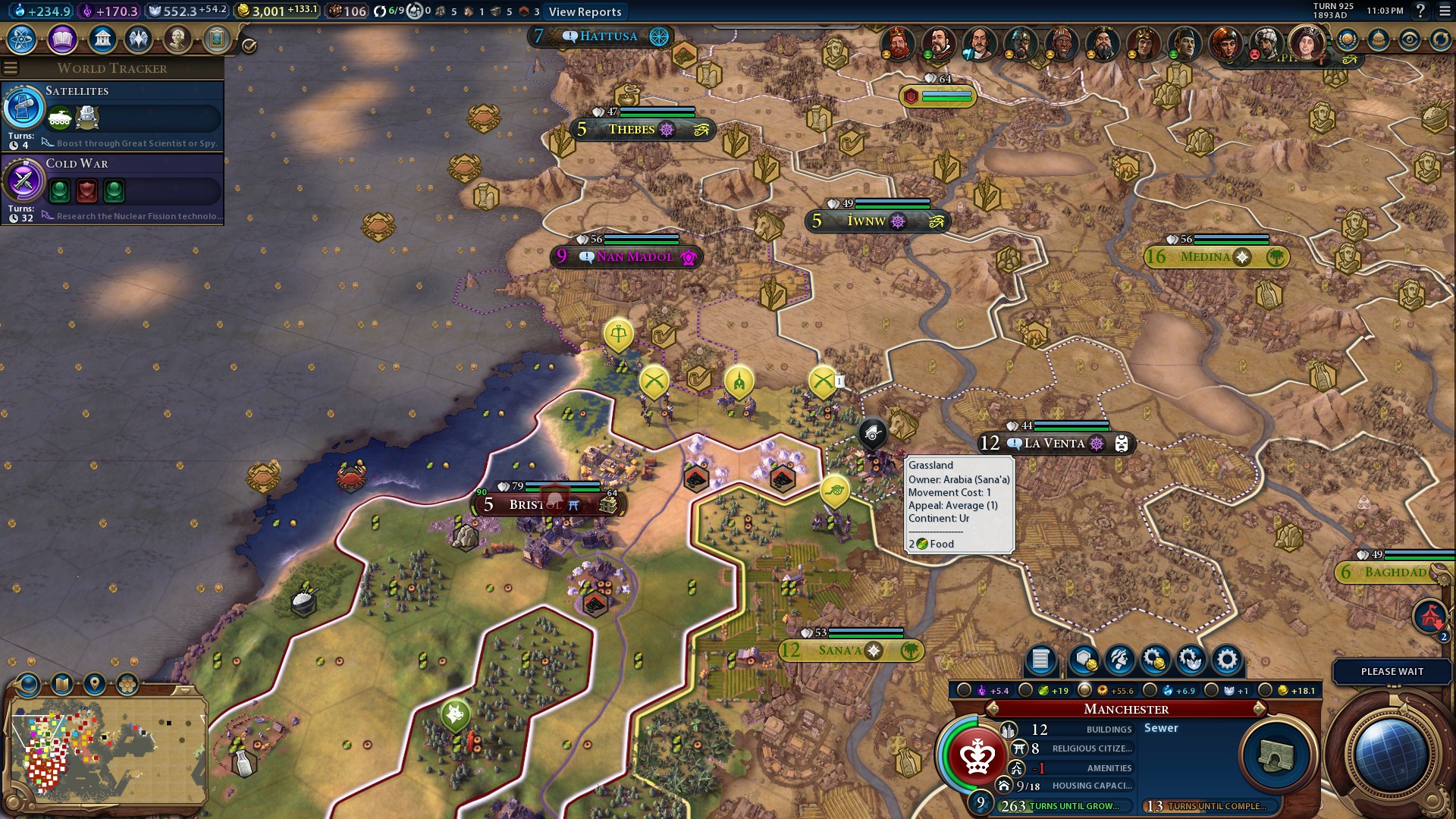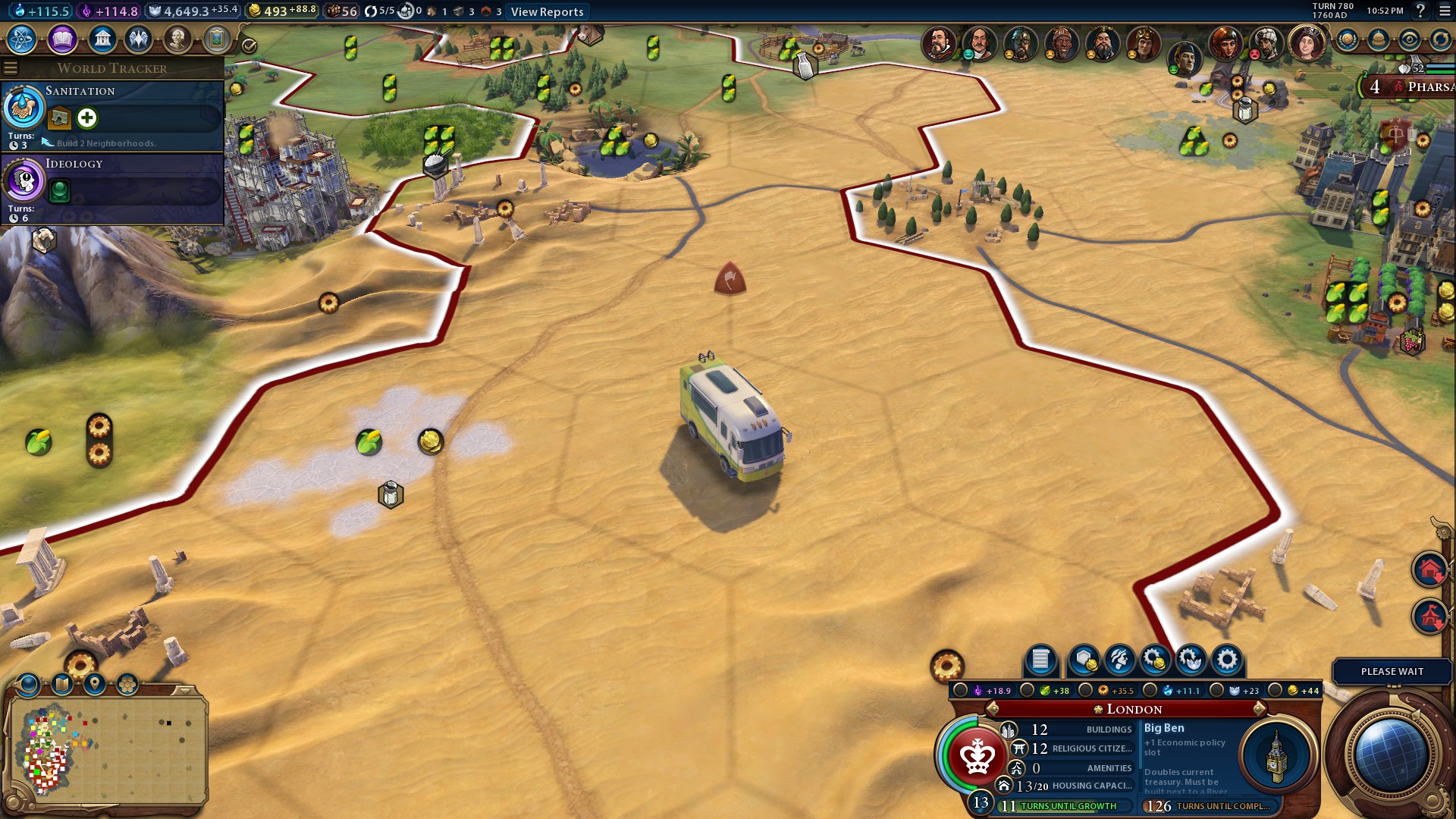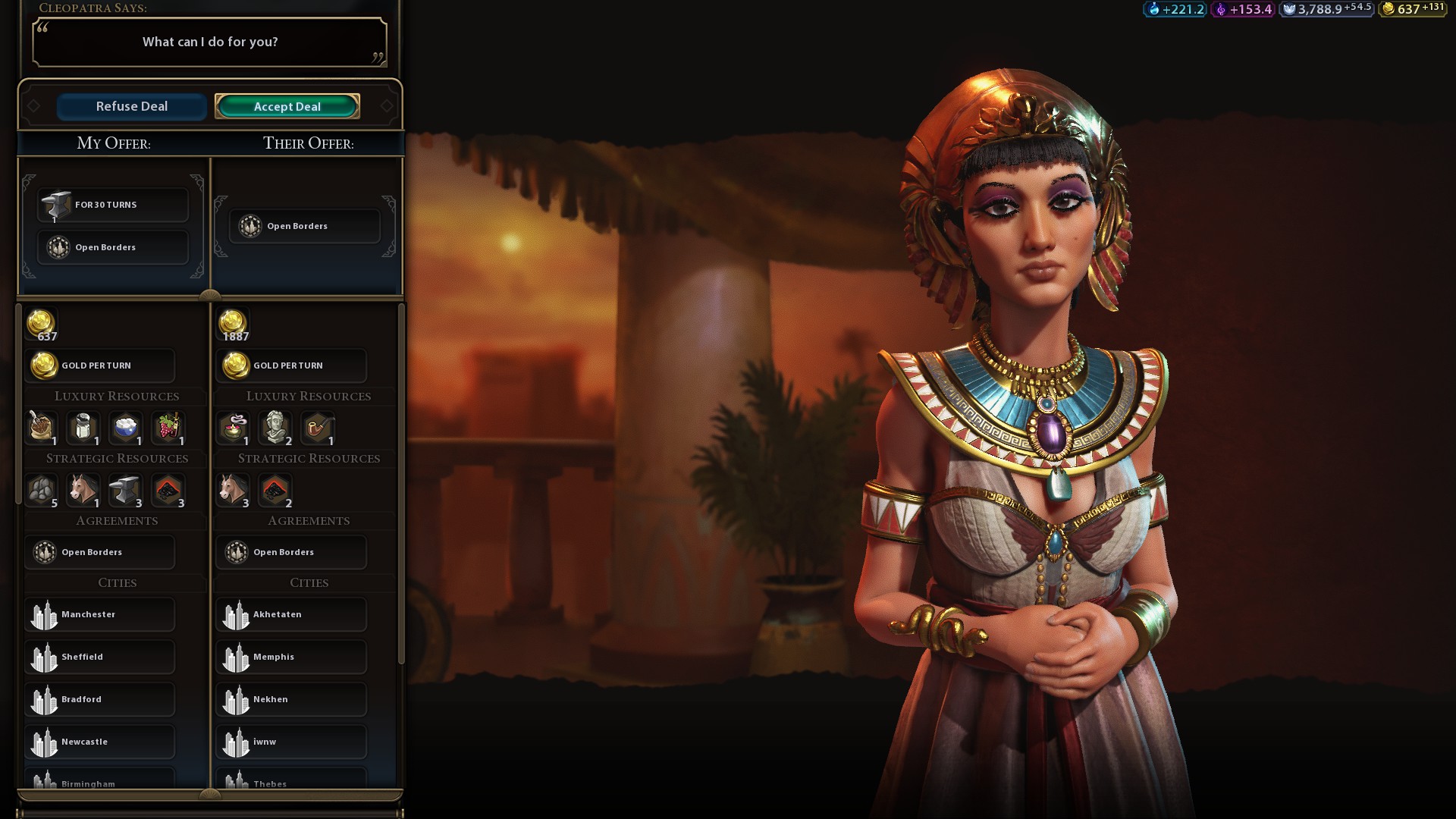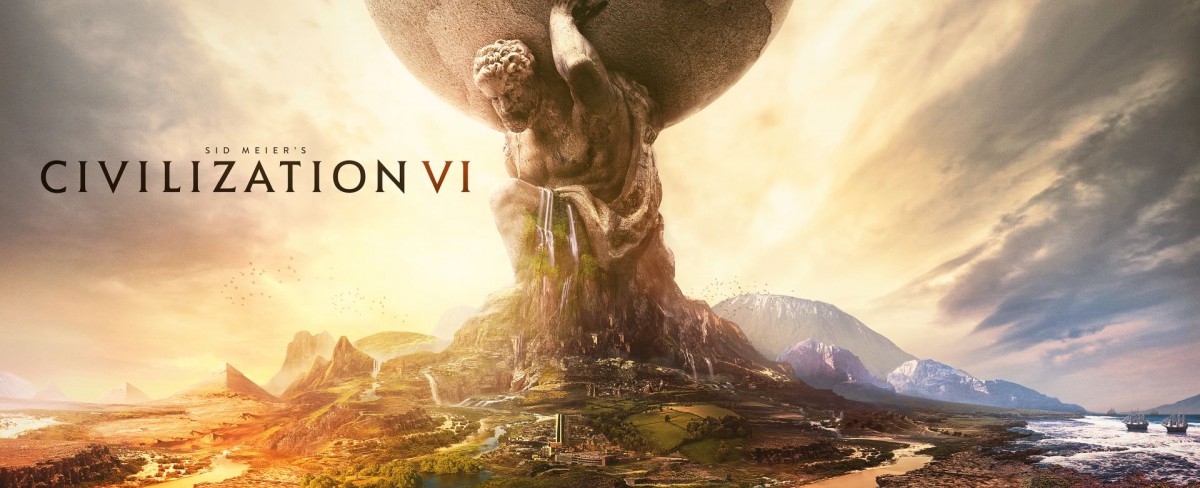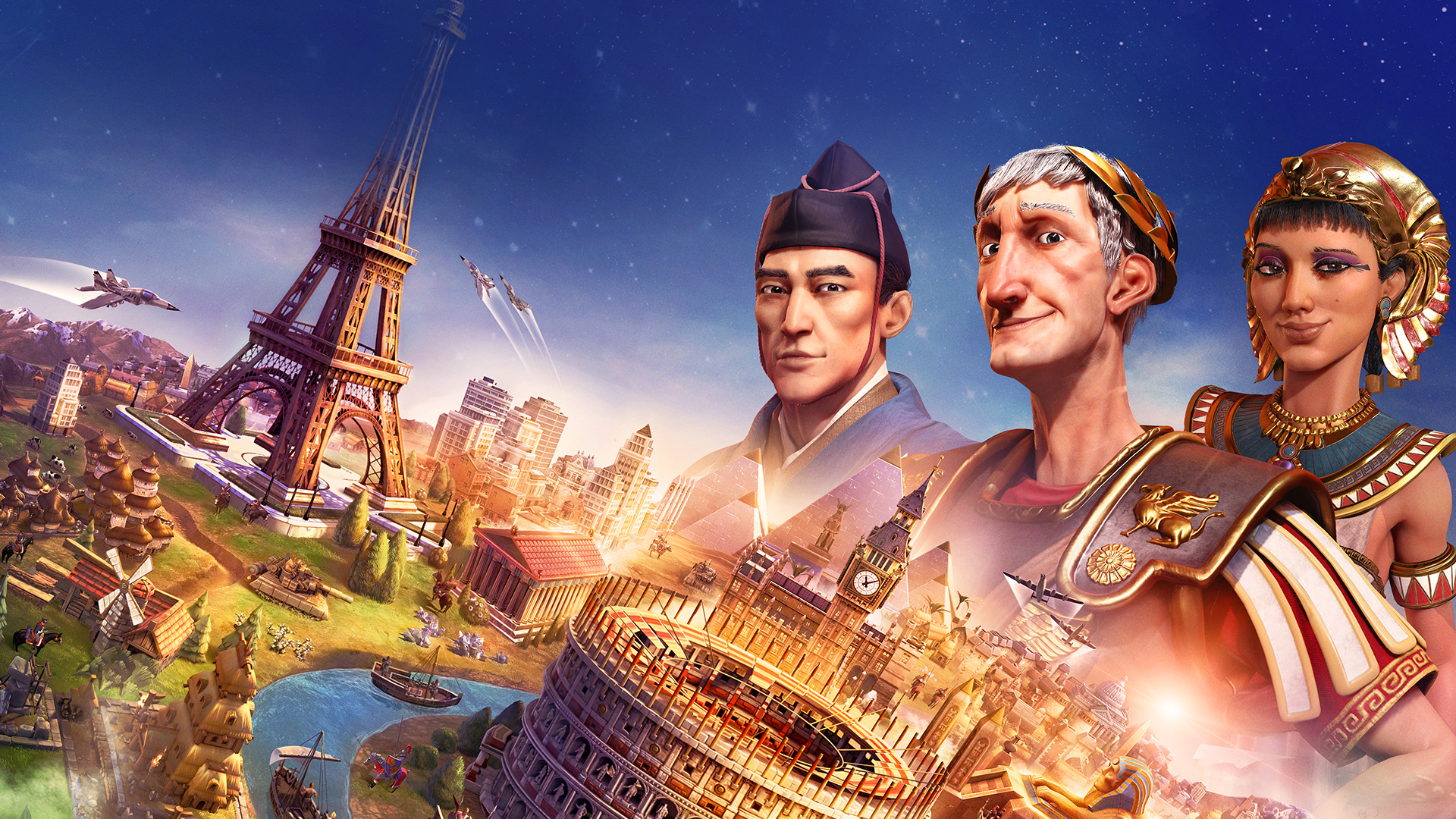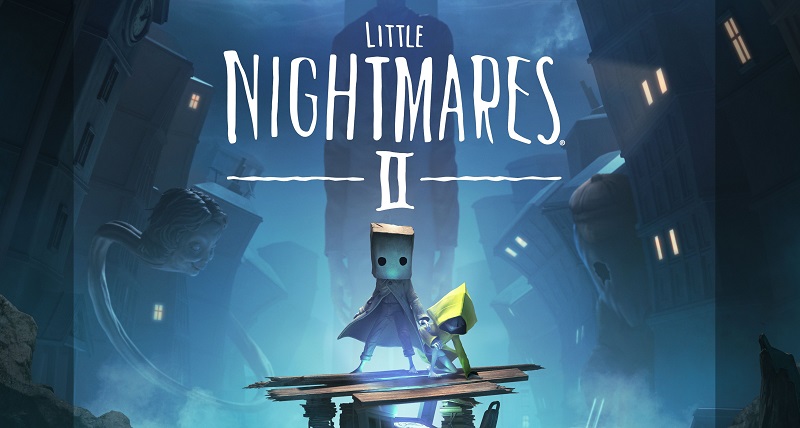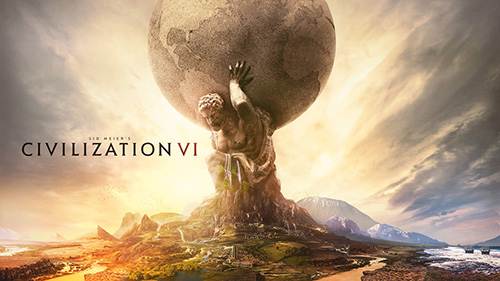
It’s early 1992. I’m on school holidays, and I’m sitting in the living room of a friend of my mother’s. In front of me is a battered old 386 recovered by her ex-husband after a housing demolition. Until that moment, all my computer experience was with Commodores and Apples. I’d never touched a PC before. I’m told I can play on it if I want, so I turn it on.
It makes a beeping sound and some weird chirping sounds and then lands me at a prompt. I type ‘dir’, one of the few DOS commands I know from reading computer magazines, and I get a listing of directories. One, named ‘CIV’, stands out. I know that ‘CIV’ is short for Civilisation, a game that came out the year before and got rave reviews in Computer and Videogames, MegaZone and Amiga Action. I ask how to run it, and my mum’s friend comes out and types ‘cd civ’ and then just ‘civ’.
The screen goes black. There’s no sound because this computer doesn’t have any speakers plugged in, but that’s okay. After a short while I’m greeted by the title screen for Civilization, the very first PC game I ever played.
My Mum and her friend spend all afternoon talking, smoking and drinking coffee. I spend all afternoon building the great English empire. I learn about ancient wonders. I learn how to create military units. I learn what the technology tree does. I slowly, but surely, learn how to play Civilization.
I never finished that first game of Civilization, but the experience stuck with me. I tried describing it to my friends at school, but they all thought it sounded really boring. It wouldn’t be until 2001’s Civilization III that I’d be able to experience the series again, this time with vastly improved visuals on a PC that belonged to me.
Every time I play a new Civilization game, I’m brought back to that moment of playing the original for the very first time. Loading up Civilization VI is no different. After sitting through its wonderful opening cinematic, I was a kid again, learning the new game for the first time. The visuals, sounds and even mechanics may have evolved since 1991, but the fundamental Civ-ness of the series is still right here, and it’s just as good as it ever was.
Speaking of fundamental Civ-ness, Civilization VI feels like a consolidation of the dramatic changes that Civilization V brought to the series. The most successful of those changes, the hexagonal grid was a no-brainer to return, but other changes, like the inability to stack multiple units on a tile, will continue to be controversial in the player base. Civ VI does offer some concessions to this, however. A new feature allows military units of the same type to be merged into corps and then armies, combining the strengths of those units into a single, more powerful unit that replicates some of the features of the old ‘stacks of doom’. It’s a nice compromise, and makes late-game army management much easier than it was in Civ V.
The game also integrates the trading and religion systems that were added via expansions to Civ V, making it feel much more complete at launch than its predecessor. Both systems have been overhauled too, making them much easier to learn and integrate into regular Civ playstyles. Religion is especially a much more proactive mechanic now, requiring you to construct units in order to spread it throughout the world. Religious units aren’t subject to border restrictions either, and can engage in combat with religious units from other civs. This means that religion can offer something for players to do on otherwise dead turns, particularly in the mid-game which, if there’s no war, can end up being a bit of a lull in any Civ game.
Perhaps the most important new addition— in terms of units, at least— to the series in Civ VI is the Builder unit. Builders replace Workers, and fulfill much of the same role, but in a different way. It was fairly common in Civ V and before to build Workers and then automate them and forget about them for the rest of the game, or at least spend a turn here and there on the busywork of moving them to their next project and waiting for it to be constructed. Builders are much more interactive. For a start, a Builder can build any improvement instantly, rather than the several turns a Worker would take. The tradeoff is that builders only have a limited number of things they can build before they’re consumed and a new one has to be made.
The change is a great one as it means that Builders are no longer a ‘fire and forget’ unit. Players need to proactively move them around and use them, and then make choices about which tiles to improve around each city, and what improvements need to take priority. Is it more important to put down a farm on this resource tile, or build a mine on that hill? The only flaw in this system right now is that forest clearing is incredibly powerful, and most early Builders will be spent on doing it in order to generate lots of production quickly for the early game.
One thing Builders can’t do that Workers could is build road and rail. This has the advantage that your late-game empire won’t be spider-webbed with roads on every tile. Instead, the Trader unit now builds roads as it goes along, essentially creating roads along trade routes. Roads themselves aren’t as important as they were in Civ V, as cities no longer need to be linked to the capital to benefit from trade, however if you like the aesthetic of having roads linking your cities you’ll need to spend some time sending Traders to your cities as well as to the foreign cities that provide the most benefit. Ultimately this isn’t too onerous of a task, and the overall trading system feels pretty good.
The biggest change from previous Civ games to Civ VI has to be to the way cities work. In previous games, a city was a single tile that had to contain all the buildings and wonders attached to that city, plus a number of surrounding tiles that could be worked by the citizens of the city (the number of citizens being the big number next to the name in the city’s nameplate). This is the most basic mechanic of Civ and to change it requires a pretty broad rethink of what cities are in a Civ game.
Civ VI has done just that, and cities can now extend across multiple tiles thanks to the new districts system. Districts provide bonuses to the city in one of science, commerce, religion or amenity, and many buildings that once resided within the city centre are now part of the districts. Libraries, for example, can only be built in the science-generating campus district, while markets are restricted to the commerce district and religious structures must be built on holy sites. Districts also provide the city with amenities, which is Civ VI’s answer to the somewhat clunky happiness mechanic from Civ V. Rather than having global happiness values for your entire civilisation, you now have a number of amenities that your city must provide to keep citizens happy. Too few, and they’ll get unhappy and possibly riot, causing some barbarian units to spawn on tiles around the city. Let’s not think too hard about the implications of rioters unhappy with the way their city is being governed being branded as barbarians and just accept that we need to send the military in to deal with them.
Barbarians in general are a lot more aggressive in Civ VI than they were in previous games, and also quite a bit smarter. They will now send out scouts to find your civilisation and report back to their camps, after which an alarming flood of units may come towards your fledgling empire. It’s important to kill the scouts if you don’t want to waste a lot of the valuable early game dealing with barbarians. It also has the benefit of meaning that early military development can’t be entirely ignored.
This is something I like a lot about Civilization VI, in fact. It introduces a lot of changes that ensure that systems that could be relatively safely ignored or only given minor attention are now much more integrated and required. In turn, this means there’s more to do in a single game, and games themselves are now much more interesting over their entire length as a result. More importantly, there are always meaningful choices to be made with most turns, and players are encouraged to be much better at managing and building their Civ, without the game beating them over the head with it. This is genuinely smart game design, and it says a lot about the years of experience Firaxis now has with the series that it can make it work so well.
Visually, Civ VI is wonderful. The game uses a more vibrant, colourful look than Civ VI, and while there has been some kickback to the more cartoonish look, I personally really like it. The map is gorgeous, and the decision to make it look like an old map with sea monsters and compass roses in the unexplored areas is really cool. The fog of war effect is even cooler, with the game making areas you can’t currently see look as though they’ve been hand-drawn on that same old map. It’s a huge improvement over the simple darkened areas of previous games and suits the tone of the series so well.
World leaders all look pretty cool, too. Again, Firaxis has gone with a cartoonish, almost Pixar-esque style here, but it succeeds in bringing out their personalities in a way that previous titles never quite managed. England’s Queen Victoria is, dare I say it, downright adorable when she denounces your civilisation. There’s also the fine mustaches of Peter The Great and Theodore Roosevelt, the stern looks of Greece’s Gorgos and Scythia’s Tomyris, as well as the elegance of France’s Catherine De Medici and everyone’s favourite drinking buddy, Norway’s Harald Hardrada. They’re all good fun to interact with, and make playing the AI a dream. Diplomacy itself has evolved somewhat from Civ V, but not the dramatic overhaul that game was from Civ IV.
Civilization VI, then, is the very best the series has ever been. If you’re someone who stuck with Civ IV after being turned off by Civ V’s changes (and, perhaps more importantly, its egregious DLC model), then you’ll be pleased to know that Civ VI is everything Civ V should have been, and then some. While there are a few gaps in terms of content that will no doubt be sold as expansions down the line (and, of course, new civs with leaders to add into the game), there isn’t that sense of incompleteness that Civ V had at launch. This is a full game ready to play.
The me from 1992 would have been blown away by Civilization VI. The amazing graphics and sound, and how cool the cities and farms and units all looked would have been jaw-dropping. But underneath it all, I would have still recognised it as Civilization, and spent the entire afternoon playing it while my Mum and her friend smoked and drank coffee in the other room, not having to worry about me because I was, and I still am, learning and discovering new things about history through the game. Civilization has evolved a lot since then, but it has never needed to change.
Engrossing, engaging Civilization mechanics are better than ever
New mechanics fit well with the series
Gorgeous new look for the map
Even more potential to overtake everything else in your life.

